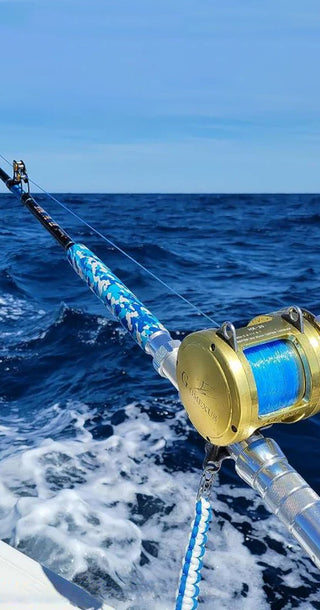Fishing, regardless of whether it's done recreationally or professionally, requires the right tools-and perhaps the most critical of these tools is bait. Understanding what bait attracts all fish can transform a frustrating, fishless day into a triumphant one brimming with catches. But is there truly a universal bait that all fish can't resist? Let's dive into this intricate topic and uncover the various types of bait that have proven most effective across the globe.

The Myth of the Universal Bait
Many anglers dream of a magic bait that lures all fish species. Reality, however, is complex. Factors like fish species, water type, and conditions all influence the efficacy of bait. Nonetheless, certain baits stand out for their versatility and effectiveness.
Understanding Fish Behavior
Before diving into the best baits, it's crucial to understand why fish are attracted to certain baits. Fish are guided by their senses-sight, smell, and taste-which means the most attractive baits cater to these sensory inputs. According to Scientific American, fish bite for various reasons, from hunger to territoriality.
Natural vs. Artificial Bait
Bait generally falls into two categories: natural and artificial. Each has its own set of advantages and situations where they're most effective.
Natural Bait
Natural bait includes worms, insects, minnows, and other live or freshly deceased organisms. The appeal lies in its realism-it looks, smells, and tastes like something fish naturally eat.
Worms: The All-Time Favorite
Widely regarded as one of the most effective natural baits, worms are a staple in fishing. They're inexpensive, easy to find, and attractive to a wide variety of fish species, from bass to panfish.
Minnows and Shiners
Minnows and shiners work particularly well for larger predatory fish like bass, walleye, and northern pike. These small fish mimic the prey that bigger fish hunt.
Insects: Nature's Lures
Insects such as crickets and grasshoppers are also highly effective. They float on top of the water, drawing fish to the surface for a quick bite.
Artificial Bait
Artificial baits include lures, flies, and synthetic worms. They are made to imitate natural bait's appearance and movement.
Plastic Worms
Plastic worms are a versatile choice, often used by bass anglers. They come in various colors and sizes, providing adaptability to different environments and fish behavior.
Lures and Spinners
Lures mimic the motion of small fish or insects and are designed to provoke predatory instincts. Spinners add an element of movement and flash that catches the eye of various fish species.
Flies for Fly Fishing
Fly fishing uses flies to mimic small insects that fish naturally prey on. This method is particularly effective for trout and other freshwater species.
Top Versatile Baits
For those seeking versatility in their bait choices, certain baits have been known to attract a broader range of fish species consistently.
Corn: The Surprising Contender
Believe it or not, corn kernels are a popular bait for carp and panfish. Their bright color and sweet taste make them irresistible to various freshwater species.
Cheese: Unorthodox but Effective
Cheese, although unconventional, works well, particularly for catfish. The smell and texture appeal to this bottom-feeding species.
Seasonal Bait Selection
The effectiveness of certain baits can also depend on the time of year.
Spring Bait Choices
In spring, fish are more active post-winter and are looking to replenish their energy. Live bait like worms and minnows can be particularly effective.
Summer Bait Selection
In summer, fish might be deeper in the water to escape the heat. Sinking baits like crayfish or heavy lures can help reach them.
Fall Bait Strategies
During fall, fish are gearing up for winter and are more aggressive in their feeding. Artificial lures that mimic small fish can attract larger predatory fish.
Winter Baiting Tips
In winter, fish metabolism slows down, making them more lethargic. Small, slow-moving bait like mealworms can yield better results.
Matching the Hatch: Imitating Local Prey
"Matching the hatch" is a term used in fly fishing to describe the practice of using bait that resembles the local prey fish are feeding on. For example, if fish are feeding on mayflies, using a mayfly imitation fly can significantly increase your success.
Expert Tips for Choosing the Best Bait
Observe Local Conditions
Research the local fish species and their feeding habits. A bait that's effective in one area might not work as well in another.
Experiment with Different Baits
Don't be afraid to change your bait if you're not getting bites. Fish can be unpredictable, and what works one day might not work the next.
Consider the Water Type
Freshwater and saltwater fishing require different types of bait. Saltwater fish often prefer larger, more robust bait like squid or shrimp.
Use Attractants
Fish attractants can enhance the appeal of both natural and artificial bait. These scents can mimic the smell of prey, increasing your chances of a bite.
Conclusion: The Ultimate Bait Decision
There may not be a single bait that attracts all fish, but understanding the behavior of your target species and the environmental conditions can guide you in selecting the most effective bait. Versatile baits like worms, minnows, and artificial lures have proven their efficiency across various conditions and fish species.
If you're ready to embark on your next fishing adventure, make sure you have a variety of bait options at your disposal. Explore the vast selection of chum, frozen bait, and lures available at One Stop Marine to enhance your fishing experience and increase your chances of success.
Whether you're a seasoned angler or a beginner, knowing what bait works best can make all the difference. By catering to the fish's senses and considering the season and local environment, you can make informed decisions that'll lead to more fruitful fishing expeditions. Happy fishing!



